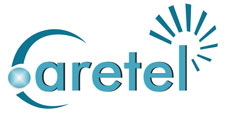Telecom billing systems have kept on evolving since their inception in the early 1990s. In the years gone by, telecom billing was primarily done for simple services like voice and SMS. The plans were simple and the significance of billing software was not that high. But, with the addition of data-based services, the pressure on billing and OSS software telecom systems has reached unfathomable proportions. No longer are customers satisfied with separate bills for different services. The paradigm of prepaid/postpaid billing has shifted completely and a centralized charging architecture has become the staple of successful telecom billing systems.
Bill Shock: The Quickest Way to Lose Customers
Keeping hold of subscribers in the current state of the telecom industry is quite a tough task. Not only you have to fend off competition from your peers, you also have to evoke customers’ interest in your telecom services with exciting offerings. And, even more importantly, you have to deliver detailed and accurate invoices that display every service charge clearly.
Customers of today are more knowledgeable than ever. Any error in billing or addition of a wrong service charge can annoy subscribers and alienate them. Therefore, it is important to partner with a telecom billing systems provider that can perform flawless billing for your MNO/MVNO and eliminate any chance for a bill shock.
Virtues of Quality Telecom Billing Systems
For a telecom billing system to be effective for a modern-day telecom operator, it needs to do a lot more than just perform accurate billing. Have a look at some virtues of quality telecom billing systems:
- Complete convergence in billing: There are so many telecom services these days that if you plan to send separate invoices for each service than you would have to send at least 4-5 of them. Neither this approach is transparent nor is it convenient for both you and your customers. A better way to deal with the situation is to employ a true real-time Online Charging System (OCS) that serves as a central point for all of your telecom charging, rating and billing. It can help you bill a range of services including prepaid, postpaid, IoT, 5G, video streaming and broadband, under the common umbrella of OCS.
- Innovative bundled plans and offerings: Simple telecom offerings just do not work in the present times. Telecom operators, especially MVNOs, need to be creative when it comes to launching new plans for their subscribers. Hence, one should invest in billing and OSS software telecom that enables quick monetization of innovative offerings including cross-product discounts. Always procure telecom billing systems that are flexible and let you stack up services in any way or form you choose.
- Self-service portal: A major portion of modern-day subscriber base includes millennials who are very hands on when it comes to their mobile phone plans. Providing them an option to mix and match different services for the creation of a customized plan allow an operator to win their hearts.
- Addition of new functionalities with APIs: Telecom services operations are never constant and new requirements emerge without any notification. Application Program Interface (API) allows operators to add new functionalities in their billing systems without any need for customization.
At Telgoo5, you get all the above-mentioned capabilities as part of your telecom billing systems. It has a wide range of APIs to fulfill your every unique business requirement.

